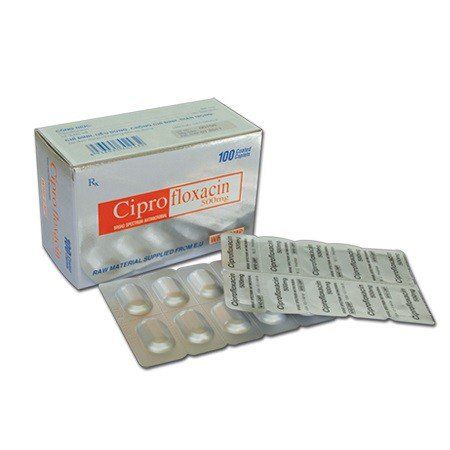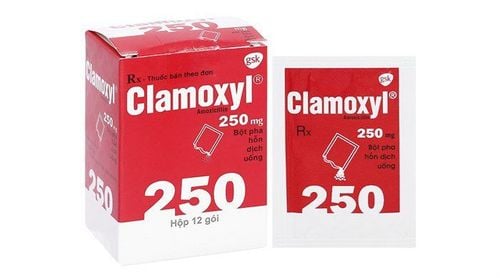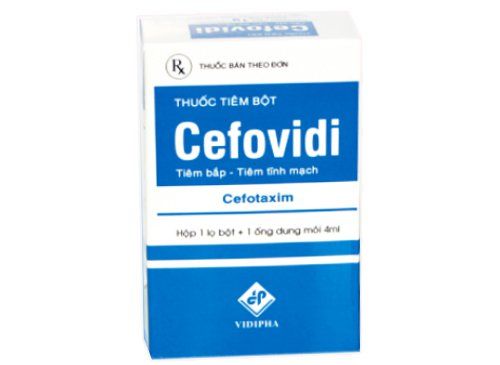This is an automatically translated article.
Cefoperazone is a 3rd generation Cephalosporin antibiotic with a broad spectrum of action, especially when combined with Sulbactam. The combination Cefoperazone/Sulbactam is in Acebis. So what does Acebis do?
1. What effect does Acebis have?
Acebis drug has ingredients including antibiotic Cefoperazone (in the form of Cefoperazone sodium) with a content of 1g and Sulbactam (in the form of Sulbactam sodium) with a content of 1g.
Cefoperazone in Acebis is a semi-synthetic antibiotic belonging to the 3rd generation Cephalosporin group. Cefoperazone has a bactericidal effect through inhibition of cell wall synthesis of growing and dividing bacteria. Cefoperazone in Acebis is an parenteral antibiotic with an antibacterial spectrum similar to Ceftazidime. This antibiotic is highly stable to beta-lactamase enzymes secreted by most gram-negative bacteria. Therefore, Cefoperazone has a broad spectrum of activity with strong activity against many strains of gram-negative bacteria, including penicillinase-producing Neisseria gonorrhoeae, most strains of Enterobacter, Citrobacter, Proteus, Morganella, Providencia, Salmonella, Shigella and Serratia.
However, the effect of Cefoperazone against Enterobacteriaceae is weaker than that of other 3rd generation cephalosporin antibiotics, but it is effective against strains already resistant to other beta-lactams.
The remaining active ingredient in Acebis is Sulbactam, which has a chemical structure similar to beta-lactam but has very weak antibacterial activity, so it cannot be used alone in clinical practice. When bound to beta-lactamase enzyme, Sulbactam has the effect of inactivating this enzyme, thus helping to protect beta-lactam antibiotics. Therefore, when used in combination with the antibiotic Cefoperazone, Sulbactam will help expand the spectrum of action of Acebis with bacteria that secrete beta-lactamase enzymes.
2. Indications and contraindications of Acebis
Acebis is indicated for the treatment of diseases caused by susceptible strains of bacteria, including:
Respiratory tract infections (upper and lower); Urinary tract infections, both upper and lower; Abdominal infections, cholecystitis and/or biliary tract infections; Acebis is also indicated in sepsis or purulent meningitis; Skin and soft tissue infections; Bone and joint infections; Pelvic infection, endometritis; Gonorrhea and other genital infections. Due to its broad antibacterial spectrum, Acebis can be used alone. However, Acebis can be combined with other antibiotics when indicated. However, when used concurrently with Aminoglycoside group, it is necessary to pay attention to monitor renal function during treatment.
Contraindications of Acebis:
Patients with a history of allergy to Cefoperazone, Cephalosporin antibiotics or other Penicillins; Patients allergic to Sulbactam and other ingredients contained in Acebis.
3. Dosage of the drug Acebis
Acebis products can be administered intramuscularly or intravenously with the recommended dosage as follows:
Adults: Mild and moderate infections: The recommended dose is 1-2g/time (calculated according to Cefoperazone). ) every 12 hours; Severe infections: 2-4g of Cefoperazone is recommended every 12 hours; In children: The recommended dose (in terms of Cefoperazone) is 25-100mg/kg every 12 hours; Patients with impaired renal function do not need to reduce the dose of Acebis; The dose of Acebis for patients with hepatic impairment or biliary obstruction should not exceed 4 g of Cefoperazone every 24 hours. There have been several reports of undesirable effects occurring with overdose of Acebis. High concentrations of beta-lactam antibiotics in the cerebrospinal fluid may lead to neurological abnormalities (eg, seizures), and therefore should be monitored with caution. In the event that Acebis overdose occurs due to renal failure, hemodialysis can remove Cefoperazone and Sulbactam from the body.
4. Side effects of the drug Acebis
In general, Acebis is well tolerated and most of the side effects, if they occur, are also of mild to moderate severity.
Digestive system: Similar to other antibiotics, Acebis' gastrointestinal side effects include diarrhea (3.9%), nausea and vomiting (0.6%); Skin side effects: Acebis, like penicillin and cephalosporin antibiotics, can cause skin allergies with erythema (0.6%) and urticaria (0.8%); Hematopoietic system: Long-term use of Acebis can lead to reversible leukopenia, positive Coomb's test in some cases, decrease in hemoglobin and red blood cells, transient decrease in eosinophils, platelets, and decrease in duration. blood prothrombin time.
5. Acebis Drug Interactions
Drinking alcohol or alcohol-containing products inhibits Aldehyde dehydrogenase, leading to accumulation of Acebis in the blood and causing a reaction similar to Disulfiram with typical manifestations such as hot flushes, sweating, headache, heart rate. fast... The above condition has been reported when drinking alcohol during treatment or 5 days after taking Acebis. At the same time, similar reactions have also occurred with the use of other cephalosporin antibiotics, therefore caution should be exercised in patients using alcohol or products containing alcohol. Aminoglycoside antibiotics: Acebis should not be mixed with Aminoglycoside antibiotics because it can reduce drug activity because of physical incompatibility. When using Acebis in combination with Aminoglycosides, the patient needs to be interrupted by infusion and must wash the infusion line between two doses of the drug or use Acebis medicine away from the time of taking Aminoglycosides. Lidocaine: The initial reconstituted solution should not be made with 2% Lidocaine HCl because these suspensions are incompatible. Sterile distilled water was used to make an initial reconstituted solution of Acebis , then diluted with 2% Lidocaine to make a compatible solution. Be careful when combining Acebis with anticoagulants, thrombolytics or non-steroidal anti-inflammatory drugs because of the increased risk of bleeding. Acebis should not be mixed with Doxycycline, Meclofenoxate, Ajmaline, Diphenhydramine, Potassium Magnesium aspartate to avoid precipitation. When mixing Acebis with Hydroxylin Dihydrochloride, Procainamide, Aminophyllin, Proclorperazine, Cytochrome C, Pentazocin, Aprotinin, after 6 hours there is a change in the properties of the drug. Acebis may cause a false positive urine glucose test with Benedict or Fehling's solution. Concurrently, positive antiglobulin (Coomb) tests have been reported, particularly in neonates whose mothers were taking the drug at the time of delivery. Acebis sometimes increases the patient's serum ALP, AST, ALT, BUN and serum creatinine.
6. Some cautions when taking Acebis
Use caution when administering Acebis to patients allergic to penicillin. Pseudomembranous colitis has been reported in patients receiving Cefoperazone and other broad-spectrum antibiotics, therefore caution should be exercised in patients receiving Acebis. A disulfiram-like reaction has been reported in patients who have consumed alcohol within 72 hours of taking Cefoperazone, therefore physicians should advise patients not to drink alcohol while taking Acebis. Cefoperazone and Sulbactam can cross the placental barrier. However, there are not enough well-controlled studies of Acebis in pregnant patients. Because animal reproduction studies are not predictive in humans, Acebis should be used during pregnancy only when clearly needed. Only small amounts of Cefoperazone and Sulbactam are excreted in human milk. However, caution should still be exercised when using Acebis while breastfeeding.
Please dial HOTLINE for more information or register for an appointment HERE. Download MyVinmec app to make appointments faster and to manage your bookings easily.













